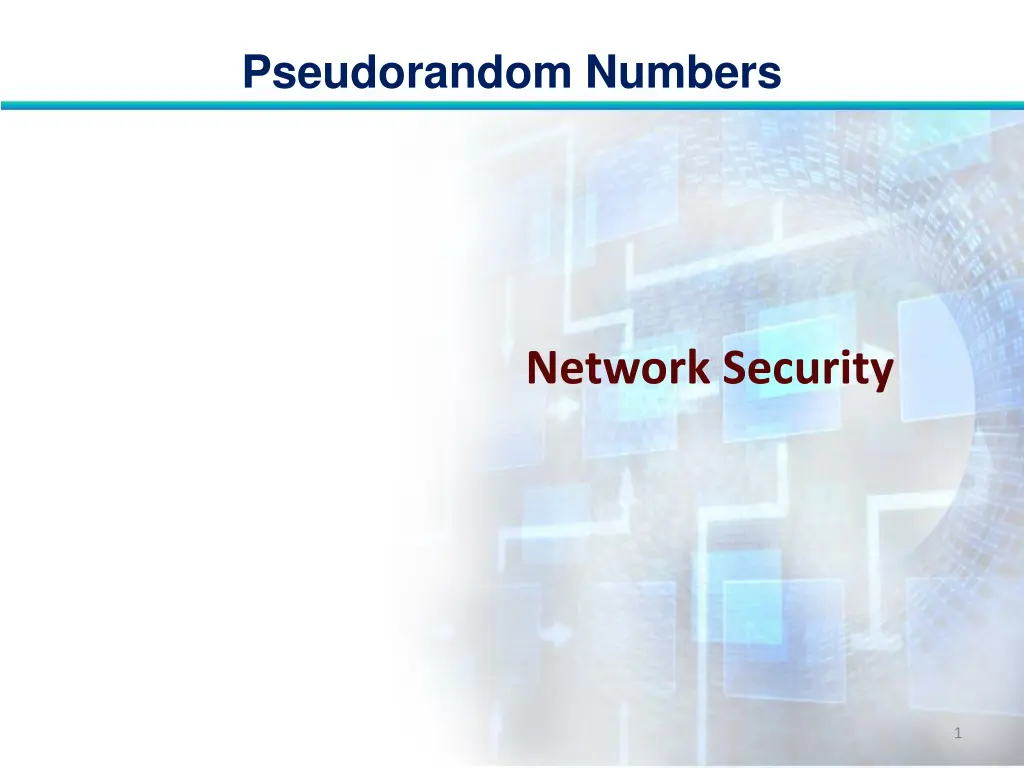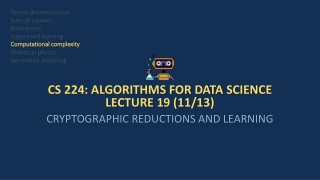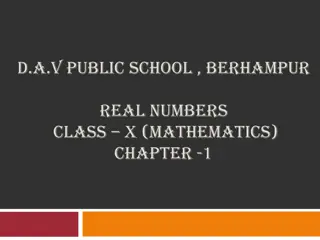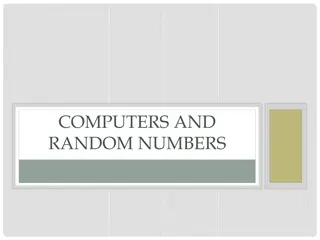
Understand Pseudorandom Numbers for Network Security
Explore the concept of pseudorandom numbers for network security, covering objectives, figures, and why deterministic algorithms are used for generating these numbers in cryptographic applications. Learn about True Random Number Generators (TRNG) and their use of entropy sources from the computer's physical environment. Discover how pseudorandom numbers perform in comparison to true randomness, offering insights into their application and reliability in various scenarios.
Download Presentation

Please find below an Image/Link to download the presentation.
The content on the website is provided AS IS for your information and personal use only. It may not be sold, licensed, or shared on other websites without obtaining consent from the author. If you encounter any issues during the download, it is possible that the publisher has removed the file from their server.
You are allowed to download the files provided on this website for personal or commercial use, subject to the condition that they are used lawfully. All files are the property of their respective owners.
The content on the website is provided AS IS for your information and personal use only. It may not be sold, licensed, or shared on other websites without obtaining consent from the author.
E N D
Presentation Transcript
Pseudorandom Numbers Network Security 1
Pseudorandom Numbers Objectives of the Topic After completing this topic, a student will be able to understand pseudorandom numbers. 2
Pseudorandom Numbers Figures and material in this topic have been adapted from Network Security Essentials: Applications and Standards , 2014, by William Stallings. 3
Pseudorandom Numbers For cryptographic applications, algorithmic techniques for random number generation are deterministic and therefore produce sequences of numbers that are not statistically random. 4
Pseudorandom Numbers If the algorithm is good, the resulting sequences will pass many reasonable tests of randomness. Such numbers are referred to as pseudorandom numbers. 5
Pseudorandom Numbers You may be somewhat uneasy about the concept of using numbers generated by a deterministic algorithm as if they were random numbers. it generally works. 6
Pseudorandom Numbers Under most circumstances, pseudorandom numbers will perform as well as if they were random for a given use. 7
Pseudorandom Numbers True Random Number Generator (TRNG) takes as input a source that is effectively random. the source is often referred to as an entropy source . 8
Pseudorandom Numbers TRNG 9
Pseudorandom Numbers The entropy source is drawn from physical environment of the computer and could include keystroke timing patterns, disk electrical activity, mouse movements, and instantaneous values of the system clock. 10
Pseudorandom Numbers The source, or combination of sources, serves as input to an algorithm that produces random binary output. The TRNG may simply involve conversion of an analog source to a binary output. 11
Pseudorandom Numbers TRNG 12
Pseudorandom Numbers Pseudorandom Number Generator (PRNG) takes as input a fixed value, called the seed, and produces a sequence of output bits using a deterministic algorithm. 13
Pseudorandom Numbers There is a feedback path by which some of the output are fed back as input. The output bit stream is determined solely by the input value, so that an adversary who knows the algorithm and the seed can reproduce bit stream. 14
Pseudorandom Numbers Two different forms of PRNGs, based on application. PRNG: An algorithm used to produce an open-ended sequence of bits is referred to as a PRNG. App: input to a symmetric stream cipher. 15
Pseudorandom Numbers Pseudorandom function (PRF): produces a pseudorandom string of bits of some fixed length and takes as input seed plus some context values (a user or application ID). App: symmetric encrypt. keys, nonces. 16
Pseudorandom Numbers PRNG and PRF 17
Pseudorandom Numbers Only difference between a PRNG and a PRF is the number of bits produced. The same algorithms can be used in both applications. Both require a seed and both must exhibit randomness and unpredictability. 18
Pseudorandom Numbers Cryptographic PRNGs have been the subject of much research over the years, and a wide variety of algorithms have been developed. These fall roughly into two categories: 19
Pseudorandom Numbers Designed specifically and solely for the purpose of generating pseudorandom bit streams Purpose-built algorithms Cryptographic algorithms have the effect of randomizing input Can serve as the core of PRNGs Algorithms based on existing cryptographic algorithms Three broad categories of cryptographic algorithms are commonly used to create PRNGs: Symmetric block ciphers Asymmetric ciphers Hash functions and message authentication codes 20






















